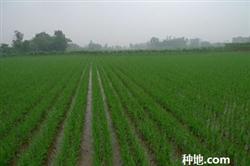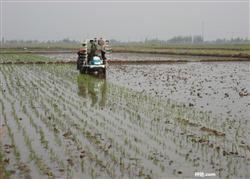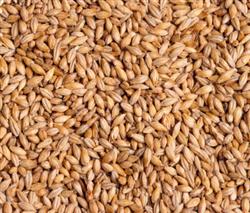How to know the situation of rice seedlings after transplanting rice seedlings

How to know the situation of rice seedlings after rice transplanting? Please introduce the situation of rice seedlings from the following points: first, leaf diagnosis. The green of rice leaves is dark, which shows that the nutrition is rich, the nitrogen content is high, the leaf color is uniform, and the leaves can be straight is the performance of healthy seedlings. Otherwise, it will be fertilized to make the seedlings strong. Second, root diagnosis. The rice root is a strong white seedling. If carefully observed, the rice root is white at the apex, yellowish brown in the middle, and dark brown at the root base. Third, the leaf tip spits water. The leaf tip can spit water automatically in the morning, indicating the strong ability to absorb nutrients and the performance of healthy seedlings. Fourth, the leaves are not soft. After transplanting rice seedlings, it takes only 5 days for rice seedlings to slow down and adapt to the growth of the field. Fifth, late emergence of seedlings. After transplanting seedlings grow slowly and their ontogeny is not normal. The reason is that the soil is hard and the soil preparation is not fine. The remedy is to loosen the soil, strengthen permeability, and irrigate a small amount of water. 6. cold and stiff seedlings. Cold and stiff seedlings are caused by low temperature, with small leaves and slow growth. Adopt thin water shallow irrigation, adjust the temperature with water to increase the ground temperature, and combine with light drying of the field. Seventh, lack of water seedlings. Water-deficient seedlings wilt at noon and can still recover the next day. If there is a serious water shortage, the wilted leaves are dry and the leaves obviously curl can not be restored, so that the seedlings can be alleviated by heat preservation and moisturization, mainly by irrigation in shallow water. 8. Malformed seedlings. Form "bamboo leaf" or "tubular leaf", the leaf is twisted, the leaf becomes shorter and wider, atrophy deformity. Should be accurate use of pesticides, do not overdose, according to the instructions to avoid abnormal vaccines. Click to get massive rice planting technology click to get massive grain planting technology
- Prev

How to transplant rice seedlings?
How to transplant rice seedlings? Please guide according to the climate characteristics, rice transplanting technology should pay attention to the following work: 1, early planting at the right time, speed up the progress, and expand the transplanting area. When the average temperature of the day passed 13 ℃ and the field water temperature reached 18 ℃, the seedlings could be planted. Transplanting rice seedlings will begin on May 8 and May 28 this year.
- Next

How to prevent and control rice stiff seedlings?
How to distinguish the advantages and disadvantages of rice seeds? Please guide how to distinguish the advantages and disadvantages of rice seeds can refer to the following methods: look at the uniformity to identify the irregular shape of seeds mixed with other rice, and the degree of fullness of grains is not the same. Look at the hull color to identify the grain color of the improved varieties should be more consistent, the color is relatively fresh.
Related
- The first cup of black tea in spring, the flavor and history of tea gardens in Kenya, Africa
- The computer can not only choose potatoes, but also grow tea rice. AI will grow winter oolong tea champion.
- It is not only the inflated tea bitten by insects, but also engraved with the four seasons tea in Beipu.
- The Oriental Beauty Tea Festival in Zhuxian County takes the stage at the weekend to experience the plus-size feast of oil tea.
- & quot; Oriental Beauty Tea & Exploration of Emei in Hsinchu, the hometown of quot;
- The new variety of strawberry "Tainong 1" dessert is the first choice with mellow aroma. Crimson gorgeous
- History of Tea in Taiwan: from Wild Inner Mountain to Export Tea Garden
- Two types of Taiwan Oriental Beauty Black Tea won the British three-Star Award for Childhood Tea Xiang Zhang Jiaqi changed from pilot to champion tea maker.
- Banana species and varieties: the planting history of Taiwan Xianren banana and dwarf banana is long, is banana disease resistant?
- Coffee planting Technology: Qianjie Coffee from Seedling to harvesting

